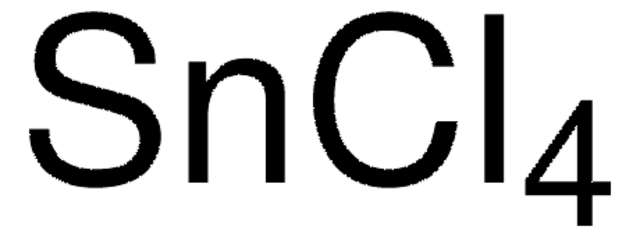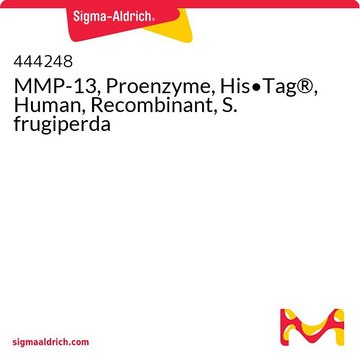408700
Poly(ethyleneimine) solution
average Mw 1800, 50 wt. % in H2O
Sinonimo/i:
Ethyleneimine polymer solution, PEI
About This Item
Prodotti consigliati
Forma fisica
liquid
Livello qualitativo
PM
average Mw 1800
Concentrazione
50 wt. % in H2O
Indice di rifrazione
n20/D 1.453
Densità
1.08 g/mL at 25 °C
InChI
1S/C2H8N2.C2H5N/c3-1-2-4;1-2-3-1/h1-4H2;3H,1-2H2
SFLOAOINZSFFAE-UHFFFAOYSA-N
Descrizione generale
Applicazioni
It can be used as a precursor to prepare polyelectrolyte multilayers for the promotion of cell adhesion and growth on implant surfaces.
PEI can act as a reactive template and stabilizing agent in the preparation of metal nanoparticles in aqueous media. The amino groups in the PEI can coordinate with metal ions dissolved in water and reduce their aggregation capability. This results in the formation of smaller nanoparticles.
Caratteristiche e vantaggi
- It has repetitive structural units and aflexible polymer chain.
- Due to the accessibility of a huge number ofamino groups on PEI, it can be modified or functionalized for specific featuressuch as sensitivity, specificity, and biocompatibility.
- Highwater solubility.
Stato fisico
Avvertenze
Warning
Indicazioni di pericolo
Consigli di prudenza
Classi di pericolo
Aquatic Chronic 2 - Skin Sens. 1
Codice della classe di stoccaggio
10 - Combustible liquids
Classe di pericolosità dell'acqua (WGK)
WGK 2
Scegli una delle versioni più recenti:
Possiedi già questo prodotto?
I documenti relativi ai prodotti acquistati recentemente sono disponibili nell’Archivio dei documenti.
I clienti hanno visto anche
Articoli
Gene therapy has become one of the most discussed techniques in biomedical research in recent years.
We present an article that discusses two applications in particular; first, using these layers as polyelectrolyte membranes to control permeability.
Il team dei nostri ricercatori vanta grande esperienza in tutte le aree della ricerca quali Life Science, scienza dei materiali, sintesi chimica, cromatografia, discipline analitiche, ecc..
Contatta l'Assistenza Tecnica.










